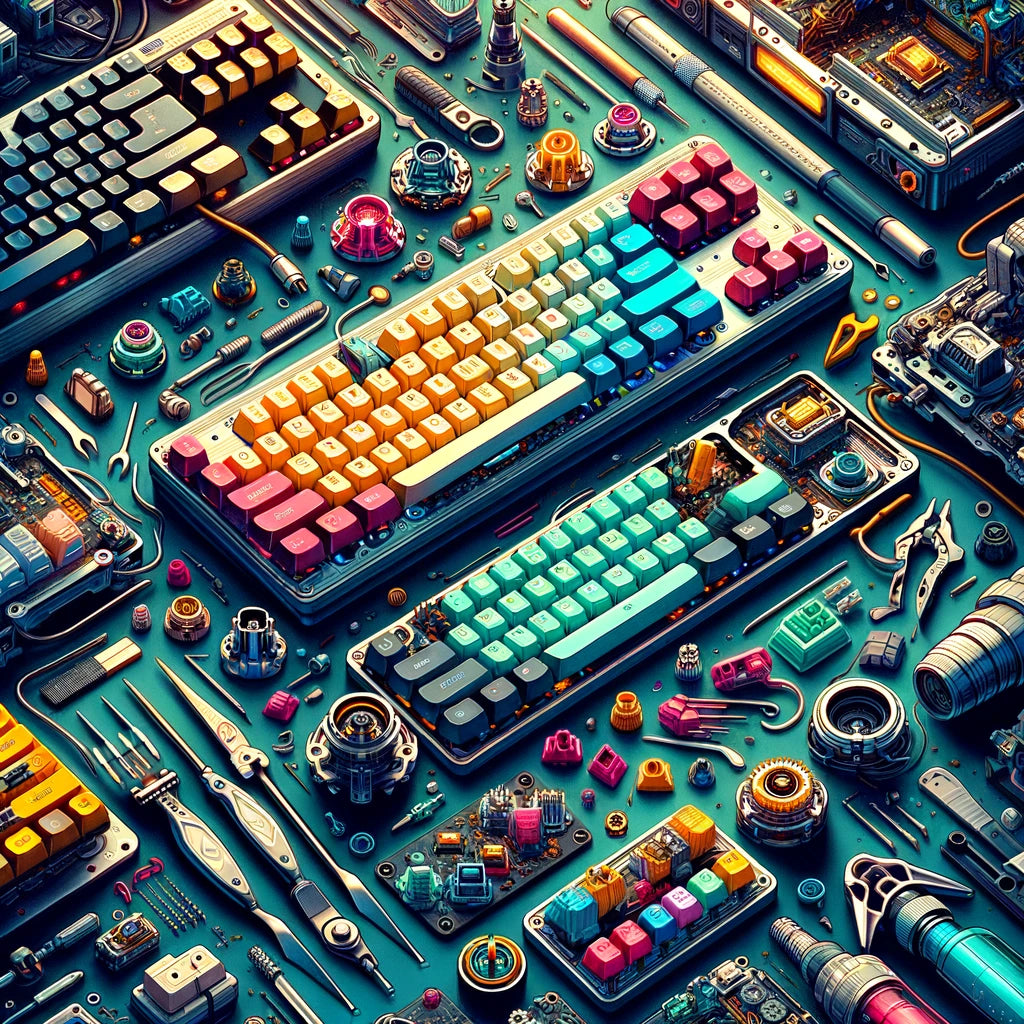| Key Takeaways |
|---|
| Mechanical keyboards are making a strong comeback due to their unique feel, durability, and customization options. |
| Different types of switches offer varied typing experiences, with the main categories being tactile, linear, and clicky. |
| Customization options range from keycaps and switches to lighting and programmable macros, allowing for a highly personalized typing or gaming experience. |
| Enthusiasts and newcomers are drawn to mechanical keyboards for their performance, aesthetics, and the tactile satisfaction they provide. |
The Return of Mechanical Keyboards
Mechanical keyboards are experiencing a significant revival, much to the delight of typing enthusiasts, gamers, and professionals alike. Known for their durability and distinct feel, these types of keyboards have regained popularity in a market that was once dominated by their membrane counterparts. Unlike membrane keyboards, mechanical ones are built with individual switches under each key, contributing to their tactile feedback and overall typing experience. This distinct feature not only enhances the typing and gaming experience but also ensures that the keyboards last longer.
Exploring Switch Varieties
The heart of a mechanical keyboard's unique typing experience lies in its switches. The switch is what determines the feel and sound of each keystroke. There are three main types of switches: tactile, linear, and clicky.
Tactile Switches
Tactile switches are known for their noticeable bump mid-press, signaling the key has been activated. This feedback helps reduce typing mistakes, as it provides physical confirmation of a keystroke without needing to press the key all the way down. They are a popular choice among typists.
Linear Switches
Linear switches offer a smooth, consistent keystroke. They lack the tactile bump and the clicky sound, making them quieter than other types. Gamers often prefer these switches as they allow for rapid, repeated keystrokes with minimal resistance.
Clicky Switches
Clicky switches are characterized by their audible click sound at the point of actuation. This feedback provides both a tactile bump and an audible sound, making them satisfying for typing. However, the sound can be loud, possibly making them less ideal for shared or quiet spaces.
Customization Options
One of the appealing aspects of mechanical keyboards is the vast array of customization options they offer. From aesthetics to functionality, there is something for everyone.
Keycaps
Changing keycaps is one of the simplest ways to customize a mechanical keyboard. Keycaps come in various materials, colors, and designs, allowing users to personalize the look of their keyboard to their liking.
Switches
For those looking for a more hands-on customization, changing the switches can alter the feel and sound of the keyboard. With the various types of switches available, users can mix and match to create their perfect typing experience.
Lighting and Programmable Macros
Many mechanical keyboards come with customizable backlighting, adding an aesthetic flair and enhancing the use in low-light conditions. Programmable macros, where a sequence of actions can be bound to a single key, can significantly improve productivity and gaming performance.
Why Mechanical Keyboards?
The revival of mechanical keyboards is not just about nostalgia; it's about recognizing the superior typing experience, durability, and customization options they offer over membrane keyboards. Whether it's for gaming, typing, or programming, the tactile feedback, aesthetic customization, and performance advantages make them a popular choice. As more people discover these benefits, the community around mechanical keyboards continues to grow, sharing knowledge, designs, and a passion for this versatile tool.
Shop Logics Technology
